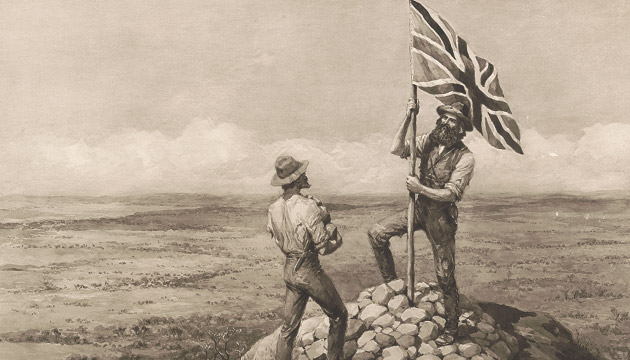It’s 150 years since John McDouall Stuart’s epic south-north crossing of Australia and anniversary celebrations around the country will ensure his legacy is preserved.
Story By John Dunn
It's a century and a half since the tough, small-statured but strong-willed former Scottish engineer and surveyor, John McDouall Stuart, and his party of 10 made the first south-north return crossing of Australia. But the passage of time has not diminished the memory or the magnitude of that epic journey. It is without question one of the great expeditions in this country’s history. At first glance Stuart – who stood only 167 centimetres tall and weighed just 57 kilograms – seemed an unlikely person to try to conquer conditions that had defeated many of those who had gone before him. But he and his men returned alive – the leader barely – to tell of their discoveries, whereas the principals of that other great trek, Robert O’Hara Burke and William Wills, did not. All three explorers are honoured for the parts they have played in opening up this exciting new continent and laying the foundations for what it is today. But the years 2012–13 mark the 150th anniversary of Stuart’s mission and a range of extraordinary measures have been made to ensure his party’s efforts are not forgotten. The John McDouall Stuart Society was formed in Adelaide in 1964 by relatives of party members, historians and others who wanted to ensure due recognition would be given to Stuart and his men. Today it is led by Rick Moore, a history lover whose great-great-grand uncle, William Kekwick, was Stuart’s second-in-command. Rick’s grandmother was a Kekwick and explained this relationship to him when he was a child, sowing the seed of an interest that has developed into a consuming love of Australia’s early history and an admiration for the men who dared to venture inland. Thus Rick, ably assisted by members of the society, resolved that this century-and-a-half milestone was an opportunity to pay tribute to this shy, enigmatic, even introverted, Scot. A range of celebrations and ceremonies are being held in his honour in cities and towns, and on cattle stations and highways that have grown up along the route he blazed. They’re also being held in galleries and libraries extending from Adelaide and Melbourne to Darwin, and as far away as London.
This story excerpt is from Issue #86
Outback Magazine: Dec/Jan 2013










